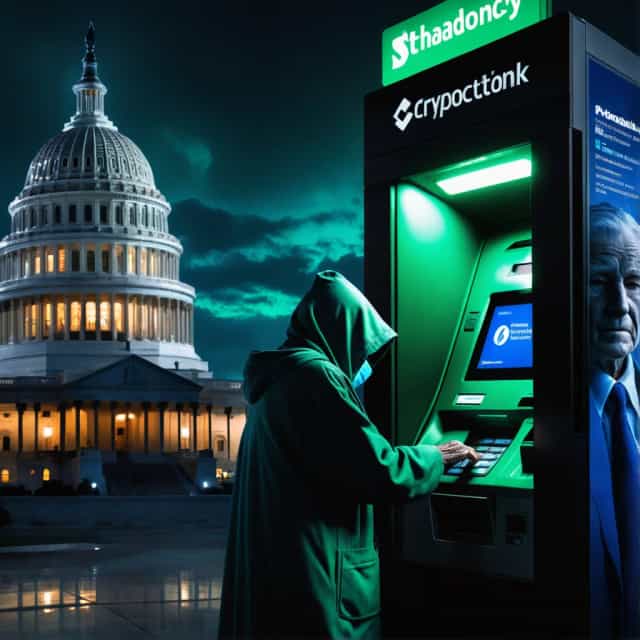
Image source: Block Media
How the “Princeton Mafia” is Shaping U.S. Cryptocurrency Markets and Corporate Finance
A cohort of prominent Princeton University alumni, collectively dubbed the "Princeton Mafia," has emerged as a formidable force in the U.S. cryptocurrency landscape. These individuals, whose professional ties date back to their undergraduate days in the 1980s, are pioneering innovative financial strategies that leverage digital assets. Central to their influence is the implementation of the Digital Asset Treasury (DAT) model—a groundbreaking approach to corporate treasury management that is transforming the sector.
The Architects Behind the Princeton Mafia
At the forefront of this influential network are three key figures: Mike Novogratz, founder and CEO of Galaxy Digital; Dan Morehead, CEO of Pantera Capital; and Joseph Lubin, co-founder of Ethereum and head of ConsenSys. Together, through their interconnected companies and ventures, they have established a significant presence in the cryptocurrency ecosystem. Their collaborations have shaped not only industry practices but also the trajectory of blockchain technology’s integration into mainstream finance.
What is the DAT Model?
The Princeton Mafia's hallmark strategy—the Digital Asset Treasury (DAT) model—has redefined how corporate treasuries operate. It combines traditional Wall Street fundraising tactics with strategic cryptocurrency investments to unlock shareholder value. The model involves raising capital, purchasing cryptocurrencies to hold as reserves, stimulating value through market appreciation, and reinvesting gains into profitable ventures.
The impact of this strategy has been substantial. In 2023 alone, nearly 85 publicly traded companies collectively raised $15.4 billion to fund DAT initiatives. This growth reflects increasing corporate interest in leveraging digital assets for long-term financial stability and growth.
Joseph Lubin as the Model’s Champion
A prime example of the DAT model in action is SharpLink Gaming, a public company chaired by Joseph Lubin. SharpLink’s approach focuses on accumulating Ethereum (ETH) reserves while pursuing high-return blockchain ventures. Both Galaxy Digital and Pantera Capital—led by Lubin’s Princeton alumni peers—have directly invested in SharpLink. This highlights the symbiotic relationship within the Princeton Mafia, where resources and expertise are shared to amplify collective success.
Other notable moves include Pantera Capital’s recent investment in Helius, a Solana-based DAT enterprise, alongside Galaxy Digital’s investment in Forward Industries shortly afterward. These overlapping investments underscore a cohesive strategy among the key players to foster long-term growth in the sector. Reflecting on this approach, Lubin has remarked, “Our strategy is to consistently raise capital, acquire ETH for long-term holding, and deploy it in highly profitable ventures.”
The Double-Edged Sword: Successes and Volatility
While the DAT model has yielded significant successes, it is not without risks. SharpLink saw its stock drop by 72% in a single trading day after announcing a rights offering in June. Similarly, BitMine suffered a 40% plunge in its shares within a short period. These cases illustrate the volatile nature of DAT-driven corporate strategies, highlighting the high-stakes environment in which these firms operate.
Additionally, some critics argue that the concentrated influence of the Princeton Mafia contradicts the decentralized ethos of blockchain and cryptocurrency. For example, recent data shows that the top 10 DAT investors were responsible for 14% of all related transactions over the past six months, with Pantera Capital and Galaxy Digital ranking among the most active players in both investment and lending activities. This centralization of power has raised questions about whether such dominance aligns with the foundational principles of decentralization.
Extending Influence Beyond Industry: Academia and Research
The impact of the Princeton Mafia extends beyond the cryptocurrency markets into academia. In 2022, the group contributed to the establishment of the Center for Decentralization Research in Blockchain Technology at Princeton University. This initiative signifies their commitment to advancing intellectual discourse and research in blockchain and decentralization, further solidifying their influence on both the academic and practical fronts of the sector.
Mike Novogratz, reflecting on the wider implications of DAT strategies, remains optimistic despite the inherent risks. “Not every DAT will succeed,” he acknowledged, “but once the market reaches a certain scale, it will contribute positively to the overall cryptocurrency ecosystem.”
Conclusion: Innovators of Financial and Industry Evolution
The story of the Princeton Mafia is one of both innovation and complexity. Through the adoption and implementation of the DAT model, these alumni have demonstrated how cryptocurrency can reshape corporate finance. At the same time, their initiatives have sparked important conversations about the balance of power in a decentralized industry. By leaving their mark on both financial markets and academic institutions, the Princeton Mafia is positioning itself as a transformative force in the ongoing evolution of blockchain and cryptocurrency.










